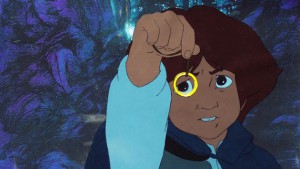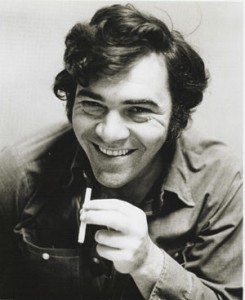 On March 28, 2015 TheOneRing.net livestreamed an interview with animation pioneer Ralph Bakshi to discuss the first-ever “The Lord of the Rings” film (1978), and to parse the differences between homage and rip-off (and the not-so-nebulous chains of inspiration from one artist to another).
On March 28, 2015 TheOneRing.net livestreamed an interview with animation pioneer Ralph Bakshi to discuss the first-ever “The Lord of the Rings” film (1978), and to parse the differences between homage and rip-off (and the not-so-nebulous chains of inspiration from one artist to another).
Bakshi revealed to us that his Studio’s “LOTR” character designs and artwork were sent down to Three Foot Six in New Zealand; elevating the conversation of his impact on the live-action epic.
The subversive director has lived through numerous controversies, yet remains undervalued by Ringer fans and feels personally slighted by Jackson. He carries on vigorously at 77 years old with a new crowdfunded animated work, “The Last Days of Coney Island” and his intent to direct a “Wizards 2” follow-up to his 1977 cult hit.
[Editor’s note: this article contains explicit language. Full video of the livestream Bakshi interview is viewable on final page.]
America’s daring pioneer of “adult animation”
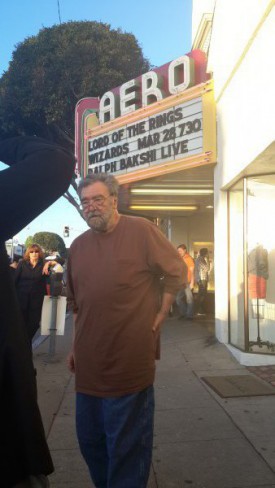 Bakshi has been one of my animation heroes for such a long time; on the short list with Ray Harryhausen, Chuck Jones, Brad Bird and Hayao Miyazaki. Although wildly different in artistry and output, they represent the most ambitious of the art form. Bakshi is America’s most daring pioneer of “adult animation” whose characters struggled (often hilariously) with sexual liberation, racial tension, violent crime and drugs. 1970s audiences gasped simply because these things were represented in cartoons.
Bakshi has been one of my animation heroes for such a long time; on the short list with Ray Harryhausen, Chuck Jones, Brad Bird and Hayao Miyazaki. Although wildly different in artistry and output, they represent the most ambitious of the art form. Bakshi is America’s most daring pioneer of “adult animation” whose characters struggled (often hilariously) with sexual liberation, racial tension, violent crime and drugs. 1970s audiences gasped simply because these things were represented in cartoons.
But today we have a huge appetite for ADULT SWIM and beyond: South Park, Family Guy, and Super Jail are all in Bakshi’s long shadow. He then mainstreamed fantasy animation by collaborating with the likes of Frank Frazetta (“Fire and Ice”) after adapting Tolkien with indelible results.
When crafting our documentary “Ringers: Lord of the Fans” I never got a chance to interview Bakshi about the pitfalls and glories of the first-ever attempt to adapt “The Lord of the Rings” into a true piece of cinema, noted by fans for its psychedelic visual effects, saturated colors, and a rotoscoping technique based on fully produced live-action reference footage. Bakshi was the man with the guts to take on Tolkien at a time when American counterculture embraced Middle-earth like never before.
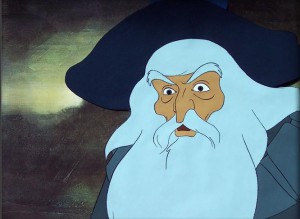 Some Ringer fans I know have disparaged Bakshi’s adaptation. Others recognize it as a creative high watermark that inspired a generation of ’70s kids to pick up Tolkien and read—one of them notably being Jackson himself. Likewise Jackson’s monumental Trilogy spurred a new generation to read. Without Bakshi’s film would Jackson have known and loved the books? Here’s to cinema inspiring literacy.
Some Ringer fans I know have disparaged Bakshi’s adaptation. Others recognize it as a creative high watermark that inspired a generation of ’70s kids to pick up Tolkien and read—one of them notably being Jackson himself. Likewise Jackson’s monumental Trilogy spurred a new generation to read. Without Bakshi’s film would Jackson have known and loved the books? Here’s to cinema inspiring literacy.
With the kind assistance of Bakshi’s son, Eddie, we had an almost instant agreement to interview him for our livestream on TheOneRing.net, a shockingly easy arrangement. 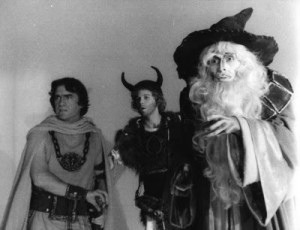
He was making a rare personal appearance at the American Cinematheque for a special weekend of screenings to honor the filmmaker. “Heavy Traffic,” “Wizards,” and my personal favorite “American Pop” were to be shown alongside “The Lord of the Rings.”
That (in)famous reputation
A short preface to illuminate my anticipation: Bakshi’s reputation for having an outsized personality preceeds him, intimidating in his stature and voice. John Kricfalusi, Canadian creator of “Ren & Stimpy,” described his mid-1970s meeting with Bakshi on our TORn TUESDAY show in August 2013:
I was just sitting, waiting, but I could hear somebody bellowing, screaming at the top of their lungs, somewhere, going all through the cubicles and stuff like that; just the LOUDEST voice I’d ever heard in my life. A huge, booming voice like a god or something, right? Like Thor … with a Brooklyn accent … So finally this monster comes out, this guy is like six foot four … he looks like Paul Bunyan!
At the time he had this big heavy black beard, really thick, and he had black, curly hair and huge shoulders; fists THIS size … I heard him yelling at everybody, right? So I thought he was going to come out and kill me, right? Instead he comes out with this *giant* smile on his face, he grabs my hand: ‘HOW YOU DOING THERE KID?!’ Like, crushing all the knuckles in it. ‘HOW YOU DOING THERE?’ Slapping me on the back — I fly about fifteen feet!
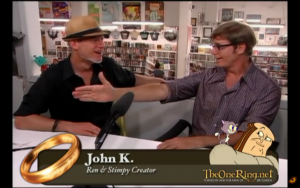 (You can watch the full video here, starting at 8mins 58 seconds. Again, explicit language warning.)
(You can watch the full video here, starting at 8mins 58 seconds. Again, explicit language warning.)
Thusly forewarned I met and shook hands with the artist who created that most infamous X-rated animated feature: “Fritz the Cat.” And there he was, smiling and squinting through his eyeglasses, simultaneously reminding me of Miyazaki-san and a giant salty teddy bear. All myths about his temper melted away. He was beaming at the guests; pleased to meet and mingle as champagne was passed around. The ‘Clifford the Big Red Dog’ meme was the one I offered so he’d remember my name and he actually laughed.
However, getting his microphone ready, Bakshi said, “TheOneRing.net? I did a huge interview with you that you guys never used.” I knew nothing of this and was caught off-guard. “Two and a half hours this kid kept me on the phone and never used it,” Bakshi continued flatly. “I’m surprised you showed up.”
The mystery of this “missing interview” he mentions is indeed an error that TheOneRing.net deeply regrets and for which I personally apologize.
I introduced him as “One of my favorite fellows in the world of animation” and further asked: “When somebody said to you: ‘Let’s do “The Lord of the Rings”‘ did you ever stop and think to yourself, ‘Oh, what am I getting myself into?'”
An identical question I had put to Peter Jackson years before. Bakshi was quick to correct the record.
“First of all — no one ever asked me to make “The Lord of the Rings… You’re the Number One network and you don’t know the whole story?” he pressed. I mentioned we spoke with Peter S. Beagle in “Ringers” in an effort to document that very story, and Bakshi joked: “How would he know the whole story? He’s just the writer.”
He then proceeded to illuminate the rather accelerated and fascinating process by which he went from the United Artists offices to the MGM suites across the way and petitioned to adapt “LOTR” in his own unique way, originally intending multiple films. Bakshi had a studio-bought 300-page script in hand that was unwieldy, unworkable, and significantly altered from Tolkien, by all accounts. Bakshi professed that the studio’s top brass didn’t understand the property at all.
“It wasn’t a major property in those days! No one knew it — everyone hated it … They couldn’t read all those books. And that’s why I got it, because I knew it was great. The guy they gave it to couldn’t do it; he didn’t understand it. He took three books and tried to make one picture with new characters; maybe he put Superman in there too, I don’t know…”


